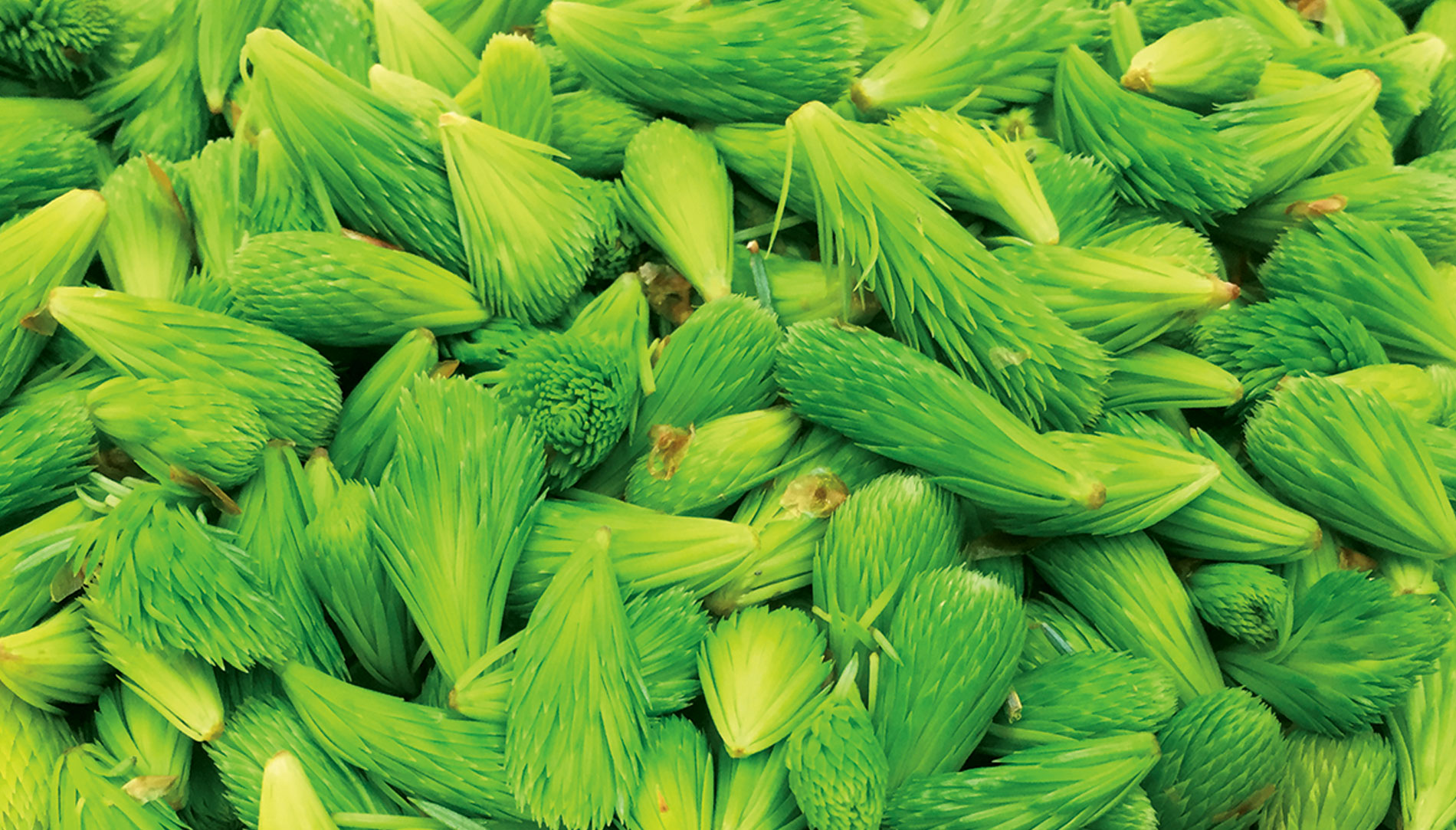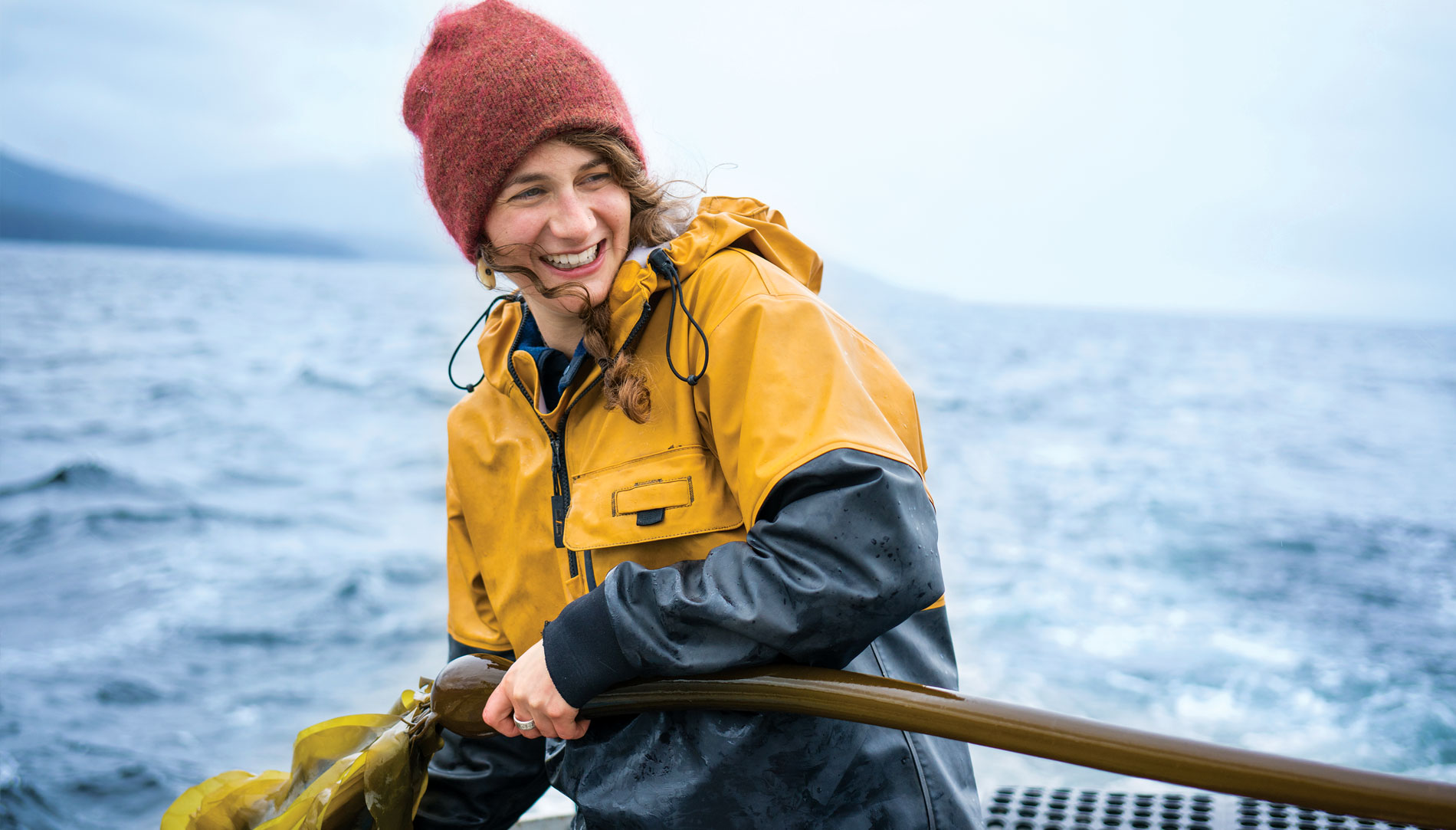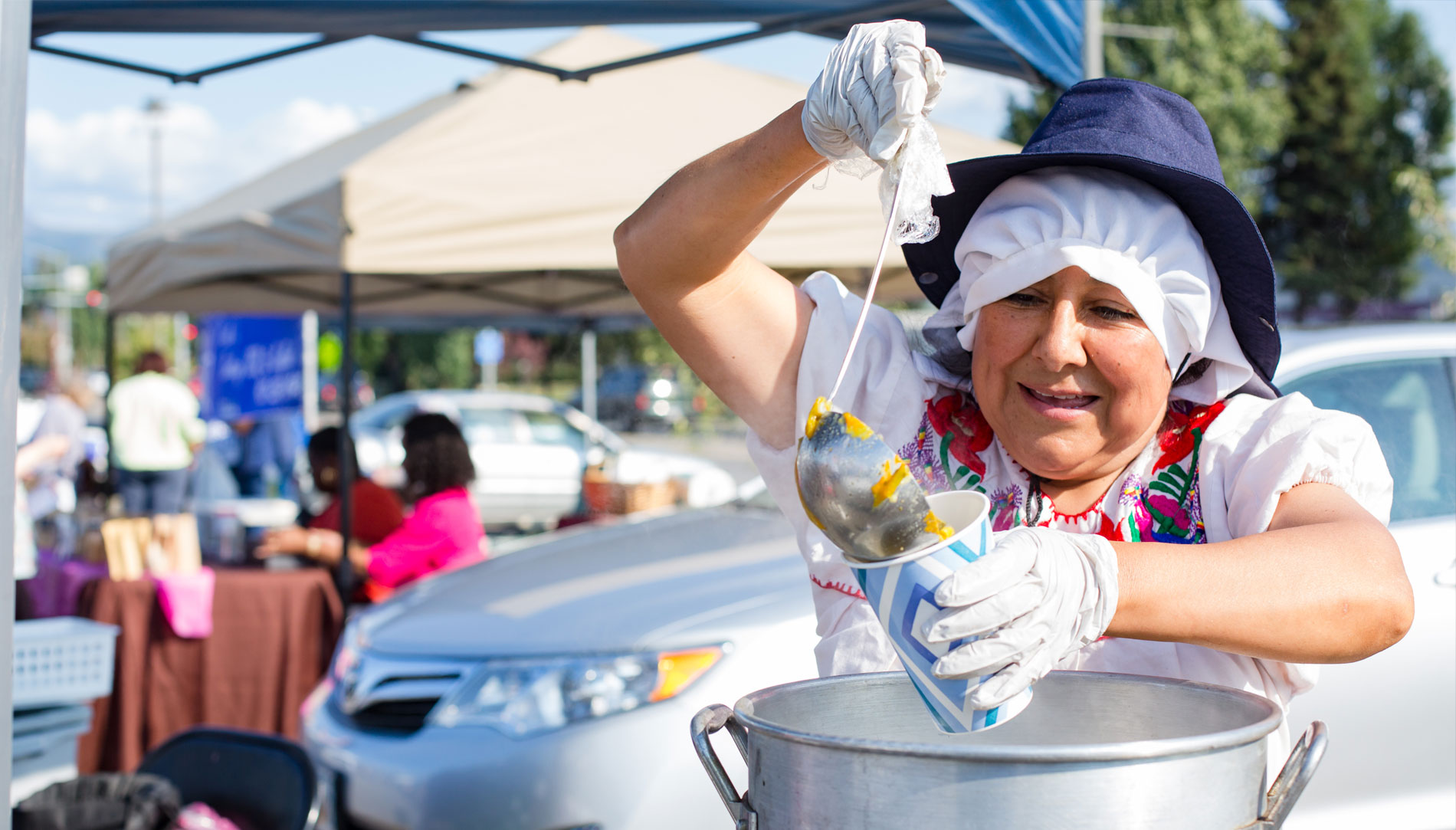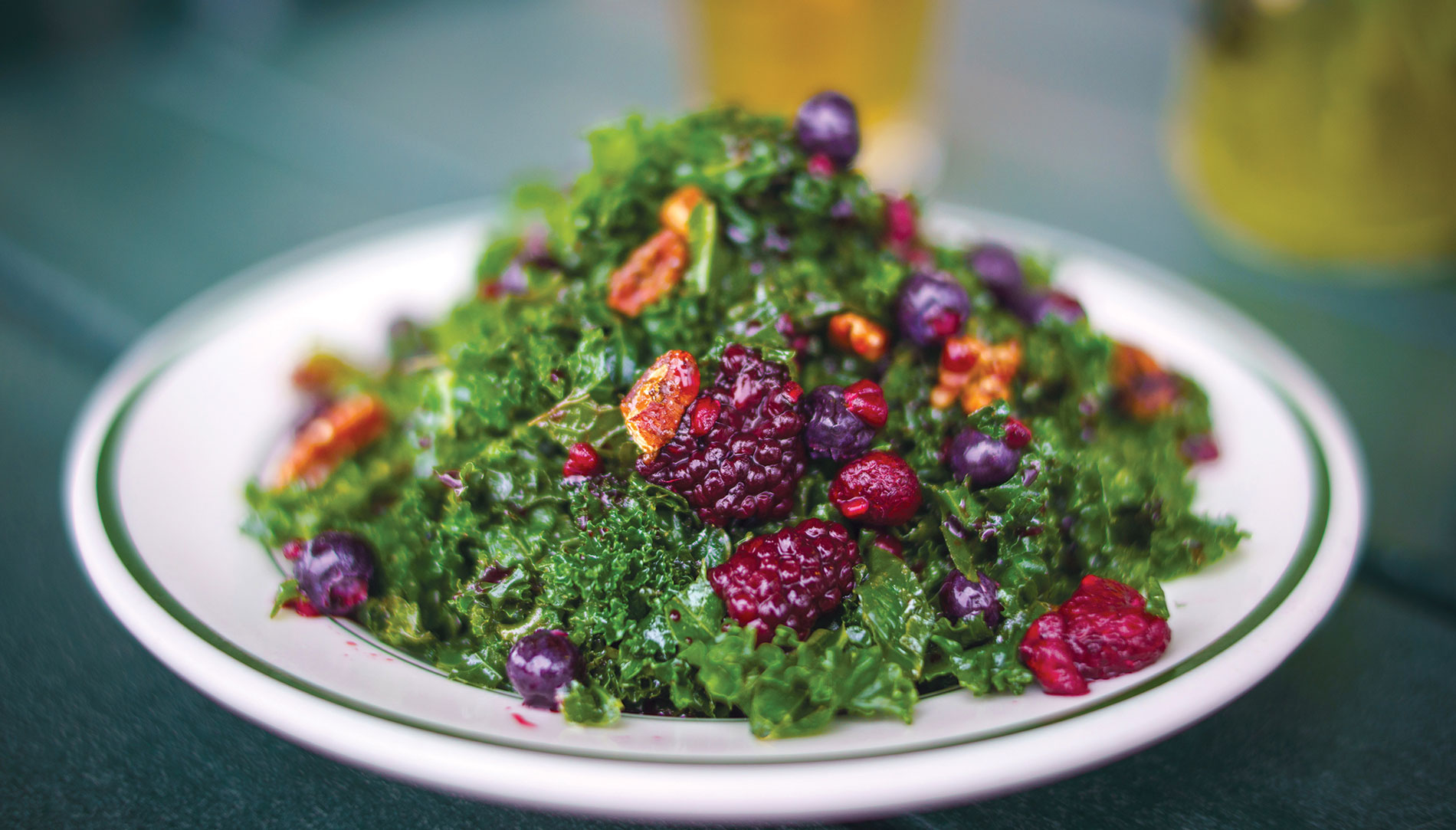Foraged Foods in Anchorage, Juneau and Sitka
Savor the season with flavors from the sea and land in three top Alaska cruise destinations.
Alaska’s vast, sublime wilderness lives up to its moniker of America’s Last Frontier, its landscape cut deeply by glaciers along the southern coastlines and rising dramatically into peaks at the horizon.
With over 571,000 square miles of territory and a large portion accessible only by air or sea, the travel experience hinges on how to get up, down, around and through. Visitors often opt for cruises or land tours to simplify the challenges, but these itineraries usually allow for no more than a few hours in each location.
Luckily for those interested in wildcrafting, local sourcing or a just a hike during berry season, it only takes a bit of planning to sample wild flavors in Juneau, Sitka and Anchorage.

Forest Foraging
From the Inside Passage to Southcentral Alaska, ancient glaciers forged deep fjords and left lush islands and peninsulas. In the fertile soil of the temperate rainforest, wild greens and berries have been harvested for thousands of years by the Tlingit, Haida and Tsimpsian peoples.
Among the earliest harvests are the soft, emerging tips of Sitka spruce branches in late spring. Their vitamin C and lemony flavor make their way into jellies, syrups and beer.
In July and August, berries start ripening in forested areas, on subalpine slopes and along creek beds. Blueberries, raspberries and yellow, orange and burgundy salmonberries resembling large raspberries grow on shrubs and are easier to identify and pick than species that grow low to the ground. Black and red currants also thrive, along with translucent red huckleberries that grow well on rocky hillsides. In fall, low- and high-bush cranberries provide refreshingly tart juice that’s sweeter after the first frost.
Anchorage-based nature writer Bill Sherwonit forages for tundra blueberries in areas where few others venture.
“Wild blueberries have a tart richness and burst of juiciness at their peak that makes cultivated blueberries seem bland,” he says. “But the appeal is the entirety of the experience: not only the picking, but the joy of hiking into alpine backcountry and the beauty of the landscape.”
These vitamin- and antioxidant-rich gems can reach the size of a nickel and find their way into specialty products in Juneau such as the ice cream at Coppa. The café’s rotating flavors include syrup made from Sitka spruce tips and honey made by bees visiting the hot pink fireweed flower that’s a symbol of Alaskan summertime.
For special Native American events, Coppa co-owner Marc Wheeler even crafts a soapberry ice cream with rare, little ruby berries that are traditionally hand-whipped.
“We can’t pay a farmer down the road to harvest strawberries, but can pay people to pick spruce tips, creating a small business network to support the local economy,” Wheeler says.
At Amalga Distillery, co-owner Maura Selenak’s Juneauper gin bursts with foraged botanicals that vary by the batch, often including Sitka spruce tips, Labrador tea leaves, rose petals or devil’s club. A recent small-batch release required a half-ton of blueberries procured by a team of foragers.
When you visit Juneau, try to find fireweed chai or spruce tip caramels at Panhandle Produce, a haven for local goods. The University of Alaska Fairbanks Cooperative Extension Service offers Wild Kitchen Walks that usually sell out quickly and should be reserved well in advance. One of the teachers, garden writer Corinne Conlon, leads private walks for groups in the height of summer and foraging walks in the early and late ends of the season.
Instead of taking Juneau’s tram up Mount Roberts, hike the trail to the interpretive center and wildlife displays at Mountain House. This difficult climb’s rewards are phenomenal views, marmots, and salmonberries and blueberries close to the trail.
For experienced hikers, Sitka’s Gavan Hill/Harbor Mountain Trail affords gorgeous views, subalpine meadows with wild blues and prolific salmonberries and huckleberries along the way. Sitka Trail Works provides maps and details for trails and group hikes that can be reserved.

Southeast Shores Wildcrafting
Mineral-rich plants like bull kelp and beach greens flourish along the saltwater coastlines of Juneau and Sitka, where they have been harvested for thousands of years. Sea beans — also known as beach asparagus for its skinny, succulent and briny shoots —grow at the top of saltwater beaches in protected coves
Bull kelp becomes marmalade in the hands of Alaska Simple Pleasures, while
Barnacle Foods in Juneau handcrafts condiments such as hot sauce, pickles and salsa made with bull kelp’s “savory, almost undetectable base flavor that you don’t find in other products,” co-founder Lia Heifetz says.
Another fan of foraged sea plants is chef Renée Trafton, the owner of seafood-focused Beak Restaurant overlooking O’Connell Bridge on the Sitka Channel.
“I moved here from New York City, where you can get whatever you want, but here you have to be creative and challenge yourself within the limitations,” she says. “It’s really satisfying to add, for example, pickled beach asparagus to arugula salad or salmon salad.”

Anchorage Accessibility
You may recognize Laura Cole from her stint on “Top Chef” or her 229 Parks restaurant at the entrance of Denali National Park. In 2019, Cole stepped in at the Anchorage Museum’s upscale farm-to-table spot, Muse, featuring wildcrafted twists on classic dishes.
Mindful of Alaska’s heavy reliance on goods imported from elsewhere and seeking “more distinctive choices and a bigger story,” Cole’s Alaska-centric menus feature produce from local farmers, fishermen and ranchers, even sustainable reindeer she butchers herself, leading to dishes such as reindeer ragu and Alaskan oysters with hand-harvested lingonberry gastrique. She also sources foraged items like juniper berries, rose hips and chanterelles for Alaskan-inspired dinners and brunch, utilizing what she calls “the store outside your door.”
Anchorage visitors venturing into the 495,000-acre Chugach State Park just a short drive northeast of town can take advantage of naturalist talks and expert guidance at the Eagle River Nature Center before heading to nearby trails and scenic, berry-rich areas in the Arctic Valley.
For those who prefer to stay in town, the Alaska Botanical Garden — with 110 acres of boreal forest and 8 acres of cultivated gardens — provides interpretive panels about native plants along the mile-long Lowenfels-Hoersting Family Nature Trail.
And the Anchorage Market, held every weekend from mid-May to mid-September, sells a variety of wild berry preserves and botanical products.

Safe and Sustainable Harvesting
Many berries will be in the height of their season in mid- to late-July in Juneau and Sitka and mid-August in Anchorage. Summer berries include Alaska’s most toxic berries — red baneberry and white baneberry — so beginners must learn to identify these and other poisonous plants.
Before venturing into the woods, sit in on a wild edibles workshop (call ahead of time to reserve a spot) and take an identification handbook like Janice Schofield’s classic “Alaska’s Wild Plants,” re-released in 2020 in an expanded edition. The University of Alaska Fairbanks Cooperative Extension Service’s website maintains a useful collection of handouts about wilderness safety and berry identification and preservation.
The Sitka Tribe of Alaska shares knowledge of ecology, history and edible and medicinal plants on guided walks in the marvelous Sitka National Historical Park, known in town as Totem Park. These daily Sitka Cultural Tours begin downtown at the Community House and include a short bus tour of Sitka’s highlights; call the tribal office to book as an independent traveler.
Berries hold deep significance for the Tlingit as spiritual and bodily medicine. Day-trippers shouldn’t need more than a taste of berries along the trails, and those planning to stay longer should consult with a local guide to make sure any gathering takes place outside of patches used for tribal harvest.
Animals large and small rely on the same tasty plants that we like to eat, so stay aware of your surroundings. Bears especially love berries in season, so travel in groups and practice bear safety. If a bear is foraging nearby, move to a different patch.
Follow the 10 percent rule of sustainable harvest and pick only a tenth of a particular bush or area, leaving plenty of fruit to grow and for others to enjoy a uniquely Alaskan experience.
– Written by Jennifer Burns Bright, who fell in love with Alaska on an adventure yacht, chucking a shrimp pot into Prince William Sound in a bathrobe and flipflops, and hasn’t looked back since.
This story originally appeared in the July/August 2020 edition of the AAA Washington member magazine, Journey.









